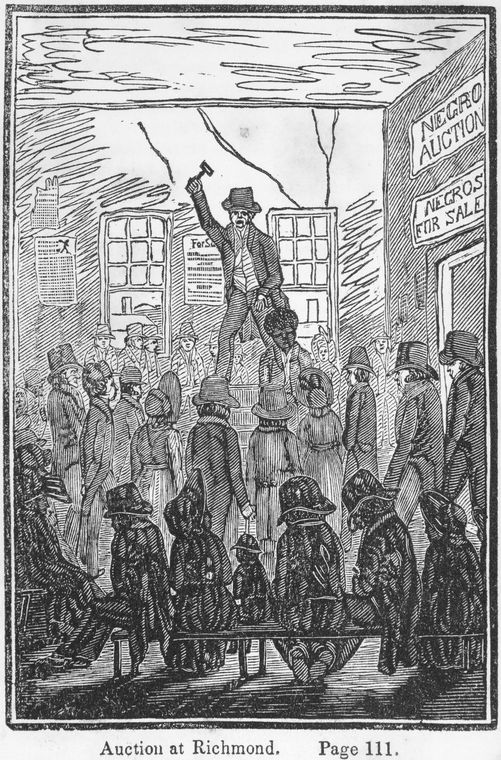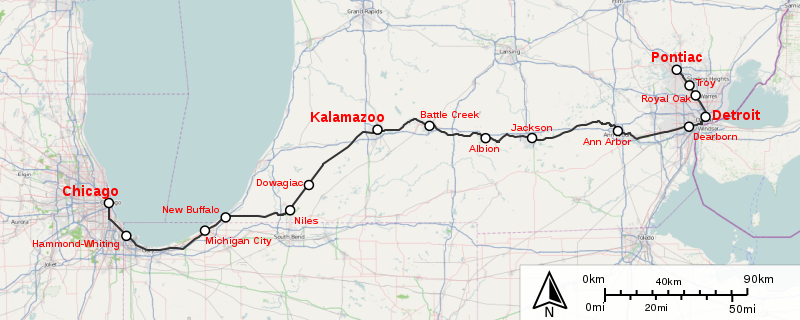Matt Estlea
Published on 14 Aug 2019In this video, I show you exactly how to cut out the sockets all the way from saw placement on the initial cuts. to refining the internal walls for a precise fit.
To get access to all the supporting content for this lesson, watch it on my online school: https://www.mattestlea.com/post/cutti…
______________________________________________________________________________________________
Support what I do by becoming a Patron! This will help fund new tools, equipment and cover my overheads. Meaning I can continue to bring you regular, high quality, free content. Thank you so much for your support! https://www.patreon.com/mattestleaDon’t want to commit to a monthly direct debit but still want to help out? That’s fine!
You can make a one time donation here: https://www.paypal.me/MattEstlea
You can donate us biscuits here: https://amzn.to/2WOl1UR
______________________________________________________________________________________________
BUY THE WOODWORKING BIBLE HERE:
– UK: https://goo.gl/X8ZzSF
– US: https://goo.gl/UDqWf3
– CA: https://goo.gl/31jBxj
______________________________________________________________________________________________See what tools I use here: https://kit.com/MattEstlea
My Website: http://www.mattestlea.com
______________________________________________________________________________________________My name is Matt Estlea, I’m a 23 year old Woodworker from Basingstoke in England and my aim is to make your woodworking less s***.
I come from 5 years tuition at Rycotewood Furniture Centre with a further 1 year working as an Artist in Residence at the Sylva Foundation. I now teach City and Guilds Furniture Making at Rycotewood as of September 2018.
I also had 5 years of experience working at Axminster Tools and Machinery where I helped customers with purchasing tools, demonstrated in stores and events, and gained extensive knowledge about a variety of tools and brands.
During the week, I film woodworking projects, tutorials, reviews and a viewer favourite ‘Tool Duel’ where I compare two competitive manufacturers tools against one another to find out which is best.
I like to have a laugh and my videos are quite fast paced BUT you will learn a lot, I assure you.
Lets go make a mess.
August 15, 2019
Cutting The Dovetail Sockets | Dovetail Box Project #5 | Free Online Woodworking School
Slavery in the American colonies
Tim Worstall outlines the history of slavery in the area under British rule that eventually became the United States:
This is so well known, what did in fact happen, that even Wikipedia has it unencumbered by wokeness.
Auction at Richmond. (1834)
“Five hundred thousand strokes for freedom; a series of anti-slavery tracts, of which half a million are now first issued by the friends of the Negro.” by Armistead, Wilson, 1819?-1868 and “Picture of slavery in the United States of America” by Bourne, George, 1780-1845
New York Public Library via Wikimedia Commons.
The first 19 or so Africans to reach the English colonies arrived in Jamestown, Virginia, in 1619, brought by English privateers who had seized them from a captured Portuguese slave ship. Slaves were usually baptized in Africa before embarking. As English custom then considered baptized Christians exempt from slavery, colonists treated these Africans as indentured servants, and they joined about 1,000 English indentured servants already in the colony. The Africans were freed after a prescribed period and given the use of land and supplies by their former masters. The historian Ira Berlin noted that what he called the “charter generation” in the colonies was sometimes made up of mixed-race men (Atlantic Creoles) who were indentured servants, and whose ancestry was African and Iberian. They were descendants of African women and Portuguese or Spanish men who worked in African ports as traders or facilitators in the slave trade. For example, Anthony Johnson arrived in Virginia in 1621 from Angola as an indentured servant; he became free and a property owner, eventually buying and owning slaves himself. The transformation of the social status of Africans, from indentured servitude to slaves in a racial caste which they could not leave or escape, happened gradually.
There were no laws regarding slavery early in Virginia’s history. But, in 1640, a Virginia court sentenced John Punch, an African, to slavery after he attempted to flee his service. The two whites with whom he fled were sentenced only to an additional year of their indenture, and three years’ service to the colony. This marked the first legal sanctioning of slavery in the English colonies and was one of the first legal distinctions made between Europeans and Africans.
That’s the 1640 start, if you prefer that. When the distinction was made between black and white runaways from that indenture.
Worth noting that there was nothing unusual about indenture. Very similar indeed to the idea and practice of apprenticeship at the time. In effect, a time limited ownership of the labor – not the person – in return for certain benefits such as transport, sustenance, training and so on. This was actually the manner in which anyone at all entered the skilled working class. Sure, it all sounds a bit feudal but then that’s because it was rather the overhang of that feudal system. And it really did apply to people irrespective of skin colour or racial – even national – background.
England hadn’t had chattel slavery since the Anglo Saxons – Scotland and certain miners being evidence that all of Britain wasn’t so lucky – and it was rather more the Moors, Ottomans, Arabs, various places below the Olive Line, who still had full on slavery.
This then full changed in the colonies. And Anthony Johnson, that arrival from Angola in 1621, who makes the history here:
When Anthony Johnson was released from servitude, he was legally recognized as a “free Negro.” He became a successful farmer. In 1651 he owned 250 acres (100 ha), and the services of five indentured servants (four white and one black). In 1653, John Casor, a black indentured servant whose contract Johnson appeared to have bought in the early 1640s, approached Captain Goldsmith, claiming his indenture had expired seven years earlier and that he was being held illegally by Johnson. A neighbor, Robert Parker, intervened and persuaded Johnson to free Casor.
Parker offered Casor work, and he signed a term of indenture to the planter. Johnson sued Parker in the Northampton Court in 1654 for the return of Casor. The court initially found in favor of Parker, but Johnson appealed. In 1655, the court reversed its ruling. Finding that Anthony Johnson still “owned” John Casor, the court ordered that he be returned with the court dues paid by Robert Parker.
This was the first instance of a judicial determination in the Thirteen Colonies holding that a person who had committed no crime could be held in servitude for life. Though Casor was the first person declared a slave in a civil case, there were both black and white indentured servants sentenced to lifetime servitude before him.
That first instance of that full on chattel slavery in the colonies that became the US was firstly in 1655 – we even know the date, March 8 – and it was of a black owning a black. Oh, and free blacks owning slaves themselves was something that never did entirely disappear from American life, not until slavery itself did in the 1860s.
This all is more than mere pendantry too. Because slavery was not simply the invention of white Europeans to oppress black Africans. A few places in NW Europe – see England above – didn’t have slavery for several hundred years before the Atlantic trade. The rest of the world carried on, quite gaily, having it. To the point that the very word “Slav” is cognate with slave. The Mamluks who ruled Egypt were a caste of mercenaries composed of slaves. The Ottoman Sultan took as his tribute from the Balkans and elsewhere male children who were then sent to Egypt to enlist. Their own children could not join that ruling caste and army. It was a non-hereditary ruling army of slaves, weird as it may seem. Africa itself was awash with slavery and the Arab slave trade up into North Africa and the Mediterranean was a trade in something already happening.
Amazing Indian Hand-Planes
Rex Krueger
Premiered 94 minutes agoMore video and exclusive content: http://www.patreon.com/rexkrueger
Plans, T-Shirts, Hoodies: http://www.rexkrueger.com/storeGet this plane! || Grizzly Model: https://amzn.to/2Z2NMcr (affiliate link; free shipping)
Direct from Grizzly: https://www.grizzly.com/products/Shop… (non-affiliate; no free shipping)
Big Horn Plane: https://amzn.to/2KvUQua (all remaining links are affiliate)
Draper Smoothing Plane: https://amzn.to/2N3sOb0
Faithful Smoothing Plane: https://amzn.to/2Ky138P
Spear and Jackson Smoothing Plane: https://amzn.to/2yXcTCKGet my woodturning book: http://www.rexkrueger.com/book
Follow me on Instagram: @rexkrueger
Amtrak is considering reviving at least one Chicago-Toronto passenger train
Lauren O’Neill reports on an Amtrak service extension proposal:

Amtrak P42DC locomotive #29 with a Blue Water or Wolverine train waits on a siding for a train in the opposite direction to pass in Comstock, Michigan.
The largest passenger railroad service in U.S. is considering a proposal that, if approved, would see trains running directly from Chicago to Toronto and back.
As discussed at the Michigan Rail Conference in East Lansing last week, Amtrak wants to extend its Wolverine line — which currently sees trains moving back and forth between Pontiac, MI, and Chicago, IL, three times per day — all the way up to Canada’s largest city.
A presentation slide shared by an official Michigan Department of Transportation Twitter account on Thursday shows that Amtrak wants to extend “at least one” Wolverine train into Ontario, “where it could continue as a VIA Rail Canada corridor service from Windsor/Walkerville to Toronto.”
It won’t happen overnight, and there’s plenty of work to be done in order for the train service to work, including the construction of a new border processing facility.
How Does it Work: Stoner’s AR System
Forgotten Weapons
Published on 18 Jun 2019http://www.patreon.com/ForgottenWeapons
Cool Forgotten Weapons merch! http://shop.bbtv.com/collections/forg…
Eugene Stoner’s AR-10 and AR-15 use an operating mechanism that is often called “gas impingement,” but which is actually a cleverly structured gas piston located within the bolt carrier. Gas is tapped from the barrel and moved all the way back to just behind the chamber, where it enters the bolt carrier. There the carrier and bolt act as the two parts of a sealed piston, and when the bolt carrier moves rearward the cam pin forces the bolt head to rotate and unlock. The expanding gas is then vented out through holes in the side of the bolt carrier. By locating the piston on the same axis as the barrel, the harmonics are improved and the overall weight of the gun can be reduced by using the gas piston elements as mass in the bolt carrier assembly. Contrary to the old adage “it shits where it eats,” the operating gasses are not vented into the magazine or chamber, and the system has proven to be very reliable.
Contact:
Forgotten Weapons
PO Box 87647
Tucson, AZ 85754
QotD: Strong female characters in fiction
If you’d asked me at twelve, I’d have told you I had no idea why the story charmed me as it did. I only knew I liked re-reading it and it became one of my favorite books. It felt good and somehow “right” in a way that fairytales and romances didn’t.
Today, when I telling the kids about it, I realized why. It was because the character was a strong woman. Born with the ultimate disadvantage, the ultimate lack of support, she doesn’t – like fairytale princesses – either get rescued by a strong knight nor even by fate that reveals her to be a hidden princess. Also, she never complains; she never repines – she takes the situation she finds herself in and makes the best out of it, all the while looking out for those who are weaker or in more need than her. This last characteristic nets her the all-important recipe book (supposedly created by a medieval convent, which rings true for Portugal, and lost for centuries.) When her romance doesn’t work because her very conventional suitor wants a girl of suitable family, she doesn’t go into a decline, she just goes on with life.
She is, in fact, what editors so often say they want “a strong woman heroine, self sufficient, a good role model for growing girls.” Only, from my observation and reading, by this they usually mean mouthy, aggressive, foolhardy and complains a lot about men till one wonders if said character has an issue with being born female. There are exceptions, of course, but complaining about fate and men and being bitter seems to be obligatory.
And yet, it is true that this type of character is not only a great role model for young women, she is the type of role model we do need. Earth needs women (yes, and men, but we’re talking women here) who take care of the weak and helpless. Earth needs women who don’t whine. Earth needs women who cheerfully shoulder the burden of what needs to be done.
Earth does not need women who complain about men all the while neurotically obsessing on clothes and jewelry to attract said men and pursuing the highest-status males they can possibly get. There is nothing wrong with these activities, in moderation, but when they become the focus of existence they create a generation of infantile harpies. Now, I don’t think any women in real life are as bad as that, but almost all women characters in books and movies are just like that.
Young women who read/watch these characters end up feeling they must APPEAR like them or they’ll be thought weak. And this is wrong. Strength in women – and men – can be defined not as throwing weight around but in doing what must be done for oneself and those who depend on one.
Earth needs grown up women.
I very much hate to tell people what to do, much less what to be, but I wish we could set about writing – and living – role models for the women Earth needs.
Sarah Hoyt, “Earth Needs Women a blast from the past of November 2010”, According to Hoyt, 2017-07-13.








